Magazzù M16: here’s how the new flagship performs when conditions get tough
Magazzù has always been the undisputed icon of high-end maxi-ribs—fascinating inflatables that stand out for their beauty and reliability at sea. These strengths deserved to be thoroughly tested during the world premiere of its new flagship: the brand-new Magazzù M16.
MAGAZZÙ M16 Sea Trial
“These are prohibitive conditions for most boats”.
This is what I think as I climb aboard the new Magazzù M16. We’re at the commercial port of Genoa, and the 17-meter maxi-rib has just been unloaded from the ship that brought it here directly from Palermo, the historical headquarters of the legendary Sicilian shipyard.
We have to face 100 miles of sea to reach Cannes, a route that will subject us to progressively more challenging weather and sea conditions, with a final stretch that, at least on paper, looks extremely difficult.
The naval engineering of this maxi-rib was meticulously developed by Alfredo and Renato Magazzù, two professionals who need no introduction. Their invaluable experience reaches its peak with this project, as for the first time in the shipyard’s history, a hull was specifically designed for IPS propulsion and, as a result, has no steps.
Onboard with me is Claudio Magazzù, designer and creator of the new M16. I’ve navigating with him many times before; he’s an experienced skipper who really enjoys navigating his own creations, and believe me, this is not a common trait…
As we leave the port, we immediately encounter long waves that, as Murphy’s law would have it, come directly from the bow. I take the helm and push the throttles forward, while the Magazzù M16, powered by its twin Volvo Penta D8-IPS-800 engines (600 HPeach), easily gets up on plane without noticeably changing its trim.
This characteristic impresses me. Boats equipped with IPS drives usually tend to sink the stern considerably, due to their pulling propellers—a rather annoying behavior that this maxi-rib seems immune to.
I settle at around 30 knots, and the bow of the Magazzù M16 slices through the long waves with ease. Onboard, the comfort is excellent, definitely above average. A glance at the display reveals we are consuming only 6.2 liters of fuel per mile, which is quite impressive for a nearly 17-meter, 20-ton boat (with full fuel tanks)!
Since the sea still allows it, I push the throttles all forward. The acceleration is powerful, and the GPS numbers rise quickly. The Magazzù M16 comfortably reaches just over 38 knots. I adjust the trim and, to my surprise, we surpass 40 knots! It’s the first time I’ve seen this happen (and I’ve tested many boats) with an IPS-powered craft.
I slow down and settle around 30 knots, then quickly steer to the left. The maxi-rib leans into the turn, entering a tight curve, as if it were on rails. I counter-steer to the right, and once again, with agility unimaginable for a boat of this size, I find myself pressed against the new side by the centripetal force.
The new Magazzù M16 is a highly responsive and reactive boat. It’s a maxi-rib that can definitely deliver adrenaline when you ask for it.
As we continue on our route, just as predicted, once we’re off the coast of Loano, the wind picks up, and the waves start shifting to the quarter and growing larger. They gradually increase, and by the time we reach Imperia, they exceed two meters in height.
The Magazzù M16, however, continues cruising smoothly at around 28-30 knots. It tackles and overcomes the waves with a comfort that feels almost supernatural—no jolts, no hesitation. Sure, we have to steer carefully in these conditions, but for now, there’s no need to slow down.
The final 20 miles are the toughest. The sky turns black, and the wind picks up even more. The waves are now truly massive, well over three meters high. Their crests break, and the wind carries the white spray onto the deck.
In such conditions, I inevitably have to change my steering style. I reduce speed and start using the throttles. It’s necessary to slow down when descending into the trough, then accelerate while climbing these mountains of water. The rudder is also crucial in this situation—waves hitting from the quarter tend to push the stern, so I need to anticipate and counteract them, then return to course.
However, calm reigns aboard the Magazzù M16. Cruising at an average speed of around 23-24 knots, with the necessary adjustments, we handle the situation in total safety, all while maintaining an extraordinary level of comfort. This boat never slams into the waves.
We finally round Cap d’Antibes, entering the shelter of the islands. The sea begins to calm, the waves gradually shrink, and they turn into long, rolling swells.
A blue motorboat, around 12 meters long, pulls up alongside us, clearly eager to race. I glance at Claudio—he smiles—and I push the throttles down once more. The Magazzù M16 shoots forward, quickly reaching 40 knots, completely unfazed by the long waves it cuts through with ease.
We cruise side by side with the motorboat for a few seconds, but then a larger wave appears. The motorboat plows into it, suddenly slowing down and sending up a towering column of water six or seven meters high.
Despite this, we continue our ride with large smiles on our faces, as this incredible boat glides freely and calmly over the water. We keep speeding along until we reach the low-speed zone near Cannes, where we are forced to slow down.
As we cruise slowly, I think back to my initial reflection: “These are prohibitive conditions for most boats”. And I can’t help but note that, clearly, I was absolutely right…
TEST DATA
| RPM | SPEED | L/H | L/NM |
| 600 | 5.8 | 5.8 | 1.0 |
| 1,000 | 8.5 | 18.7 | 2.2 |
| 1,250 | 9.6 | 31.7 | 3.3 |
| 1,500 | 11.0 | 58.3 | 5.3 |
| 1,750 | 13.4 | 81.7 | 6.1 |
| 2,000 | 19.0 | 110.2 | 5.8 |
| 2,250 | 24.2 | 145.2 | 6.0 |
| 2,500 | 28.2 | 172.0 | 6.1 |
| 2,610 | 30.3 | 187.9 | 6.2 |
| 2,750 | 32.2 | 202.9 | 6.3 |
| 3,000 | 36.9 | 239.9 | 6.5 |
| 3,250 | 40.3 | 266.0 | 6.6 |
The Magazzù M16 in detail
Let’s start by saying that no two Magazzù boats are the same. The shipyard, indeed, works in a semi-custom mode, extensively personalizing each rib based on the owner’s tastes.
The model we tested, which reflects the specifications chosen by its discerning owner, not only features IPS propulsion but also boasts interiors specifically customized to meet their needs. As we descend to the lower deck, we are greeted by a dinette, equipped with an L-shaped sofa and table to starboard and a matching sofa to port, comfortably seating 5 to 6 guests.
From here, a corridor leads to two spacious bathrooms, each with separate showers and seating areas. Continuing forward, we find the master cabin which, equipped with a king-size central bed, is literally filled with wardrobes and cabinets, offering ample storage space.
Heading aft, we discover the second cabin of the Magazzù M16 that, despite being located beneath the cockpit, still offers more than enough headroom for comfortable sleeping. In this case too, the bed is generously sized.
The deck layout features an expansive platform in the stern, which conceals a pair of very useful storage compartments. Moving forward, there’s a central sunpad that integrates with the aft sofa of the external dinette.
This area is spacious and highly functional, with two opposing sofas—one U-shaped and one traditional—allowing up to eight guests to have dinner in total comfort. The forward sofa, thanks to an adjustable backrest, can easily be converted into a second, equally comfortable, forward-facing seat. Additionally, there are five fridges built into the console, which also houses the galley. The latter can be outfitted with sinks, cooking plates, and a grill, depending on the owner’s needs. This entire area is shaded by the Hard-Top and an electrically extending awning.
Beneath the large Hard-Top is the helm station, which has seating for four people, all facing forward. The steering console is positioned to starboard, with enough space to accommodate two large displays and all the onboard electronic instrumentation.
At the very bow, there is another large sunpad, which, along with the opposing sofa, creates a second valuable convivial area.
Technical Specs
|
LOA |
16.70 m |
|
Max Beam |
4.80 m |
|
Water Tank Capacity |
400 L |
|
Fuel Tank Capacity |
2 x 1,000 L |
|
Max Power |
1,800 HP |
|
IPS Version |
2 x D8 IPS 800 600 hp |
|
Outboard Version |
3 x 600 hp |
|
Design Category |
B – 20 Passengers |



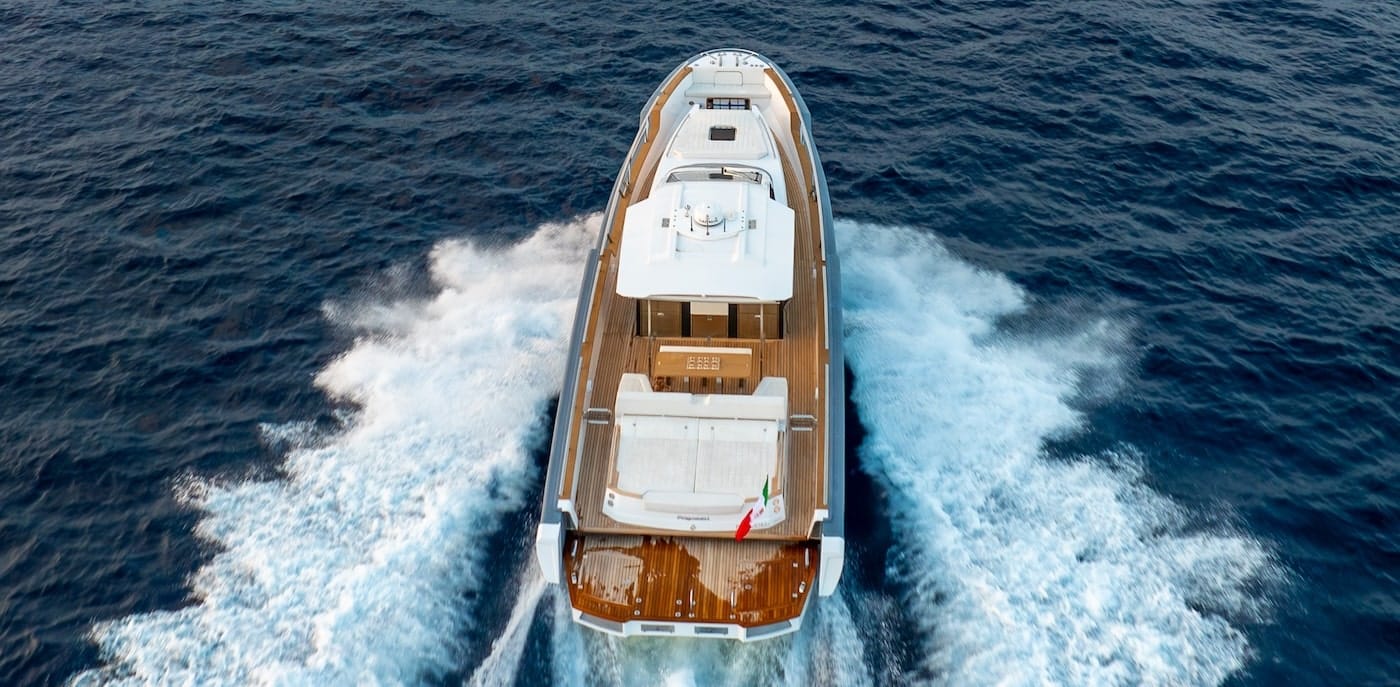

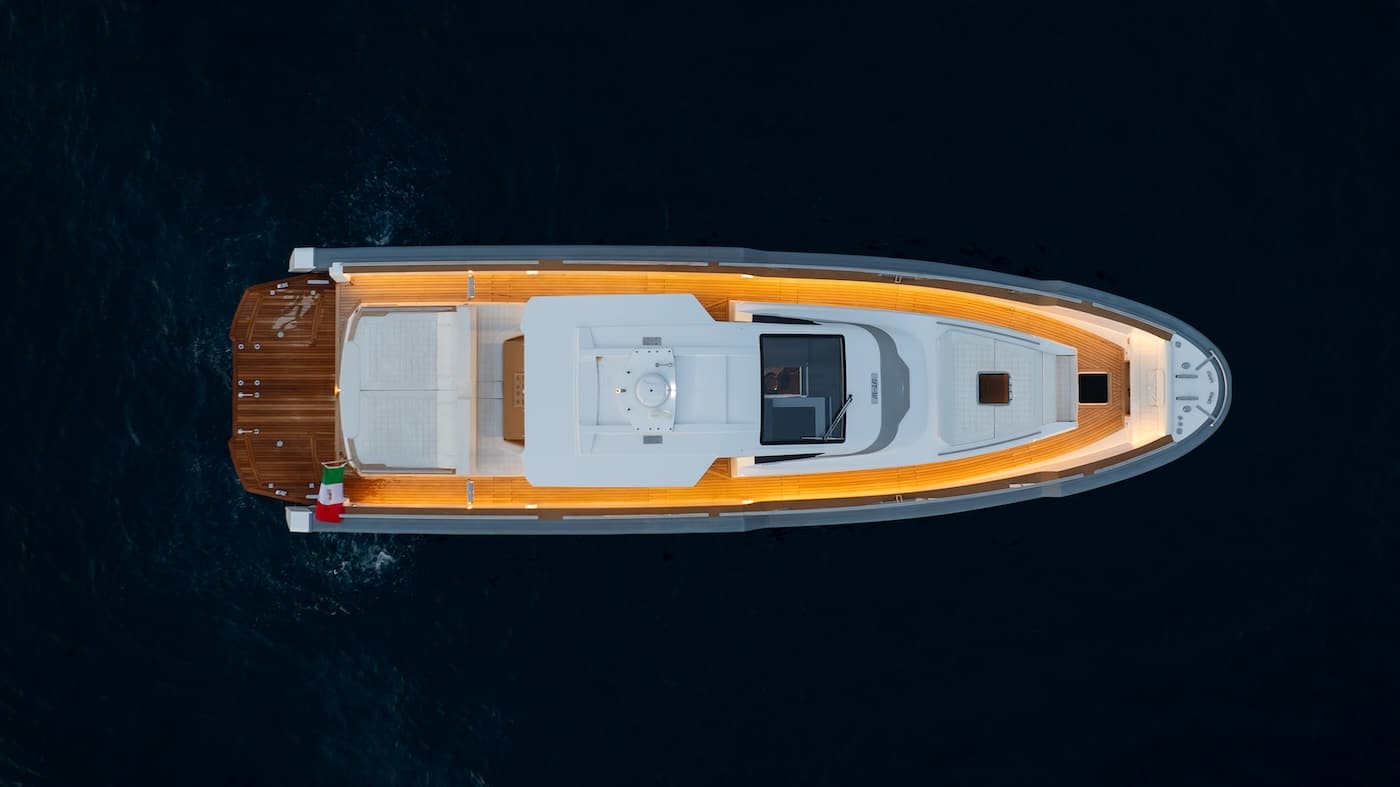
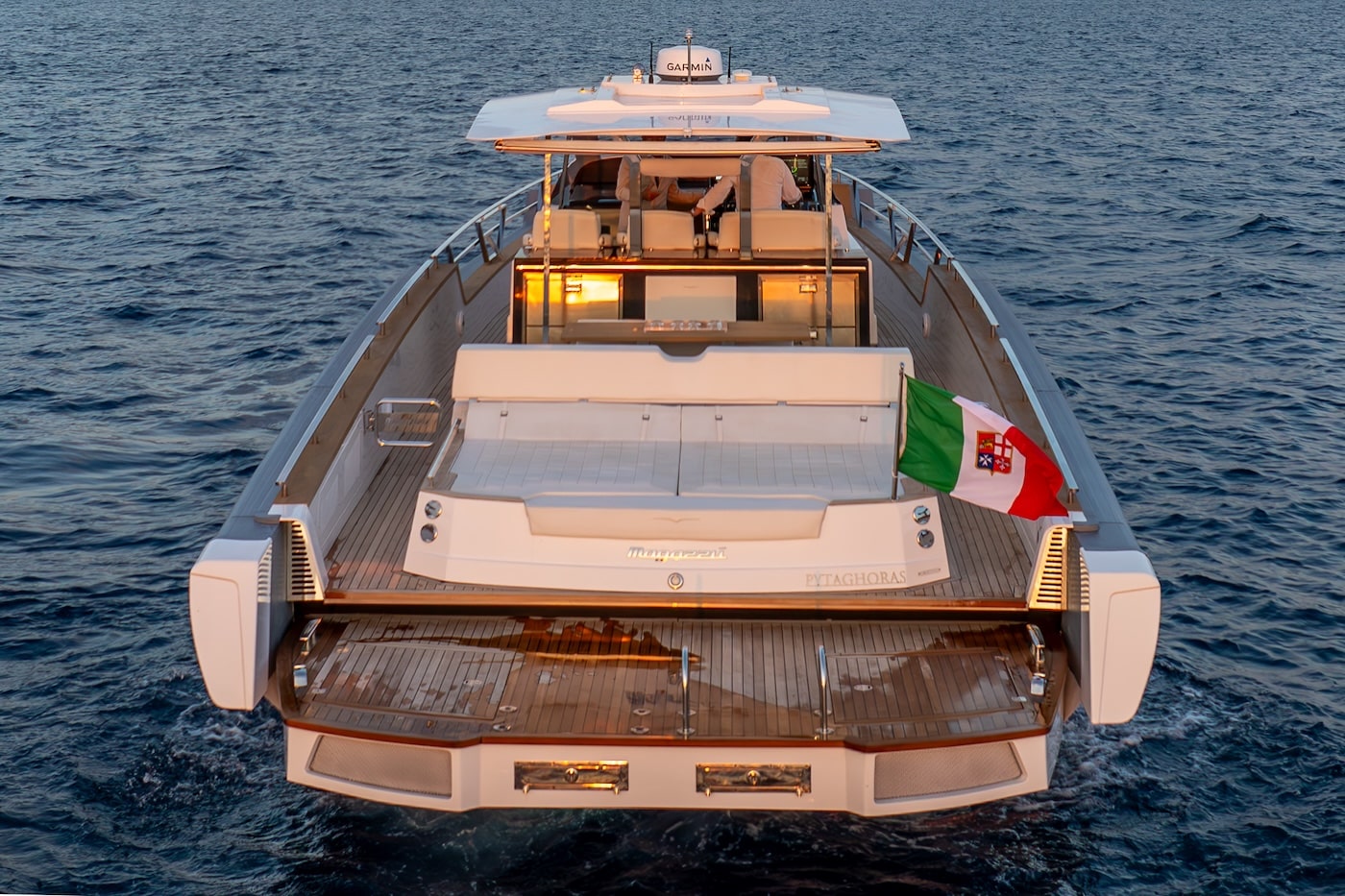
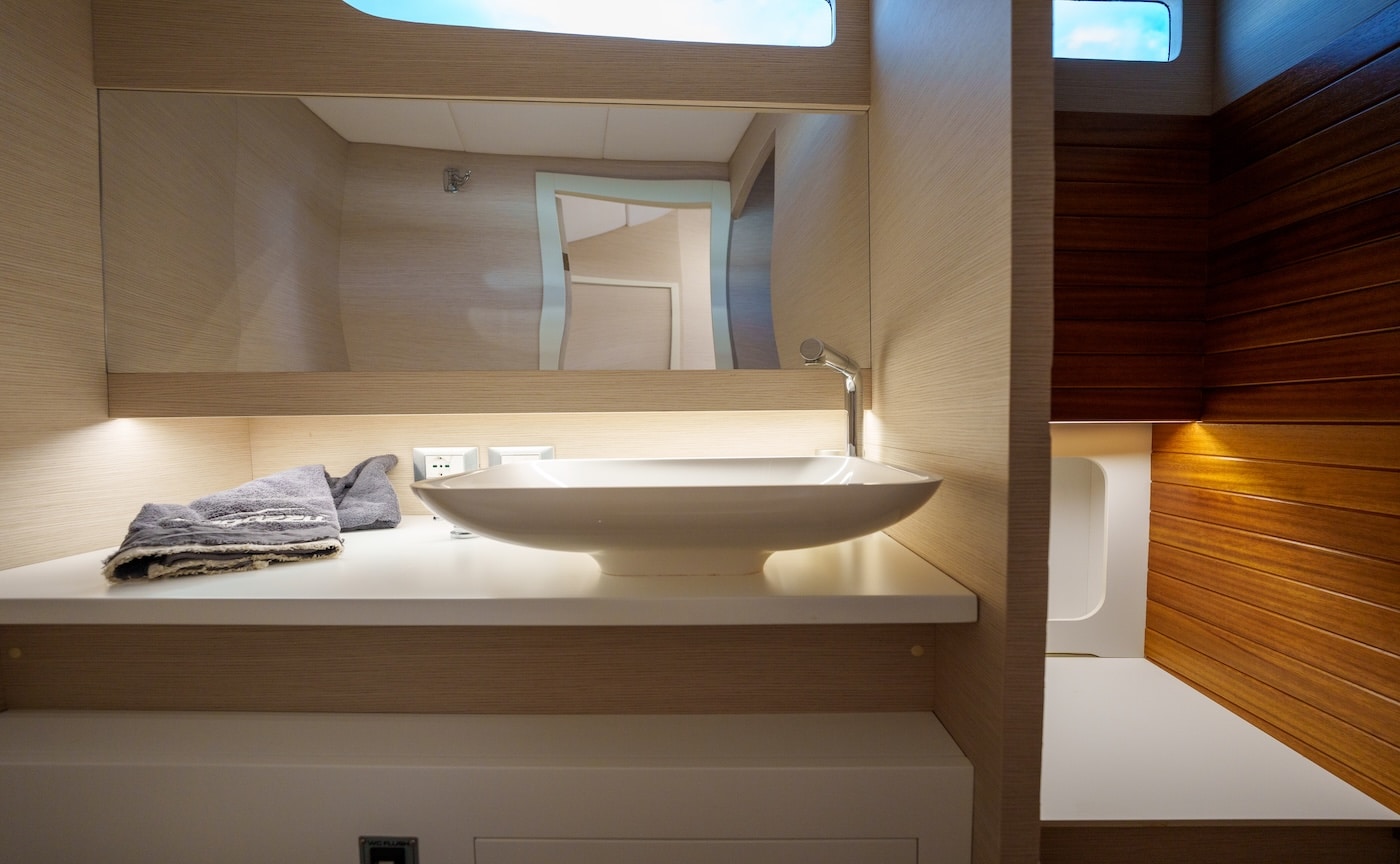
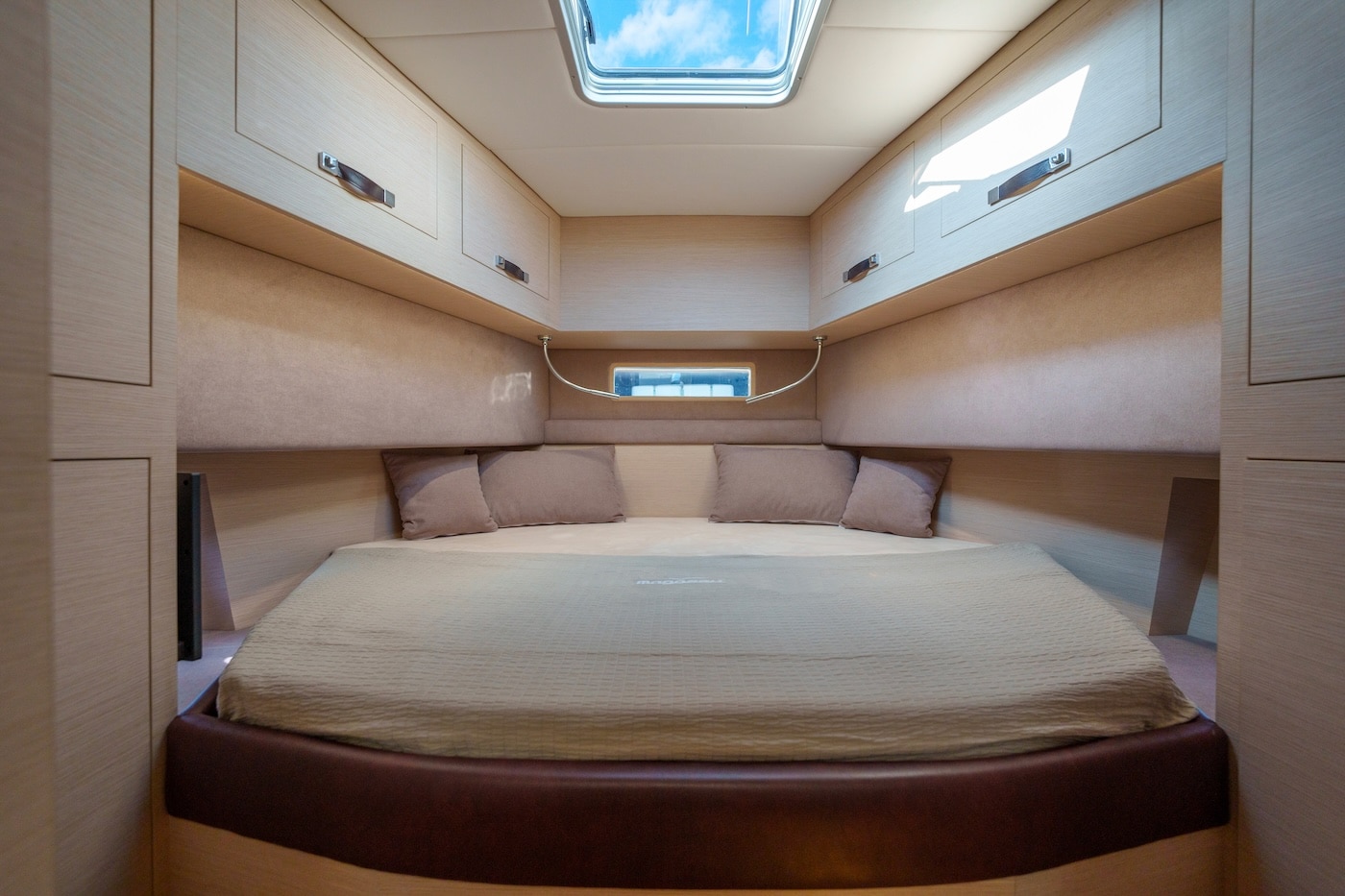
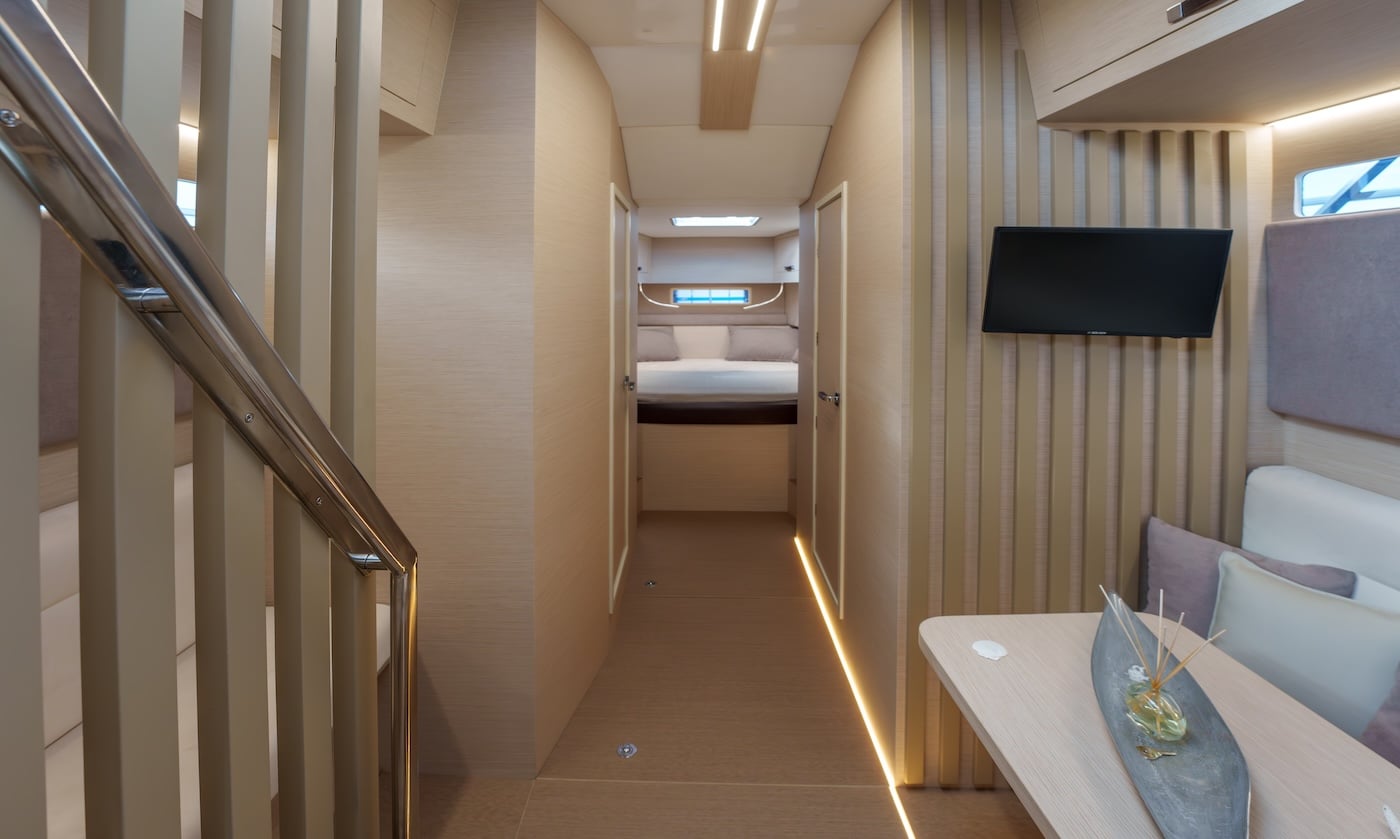



















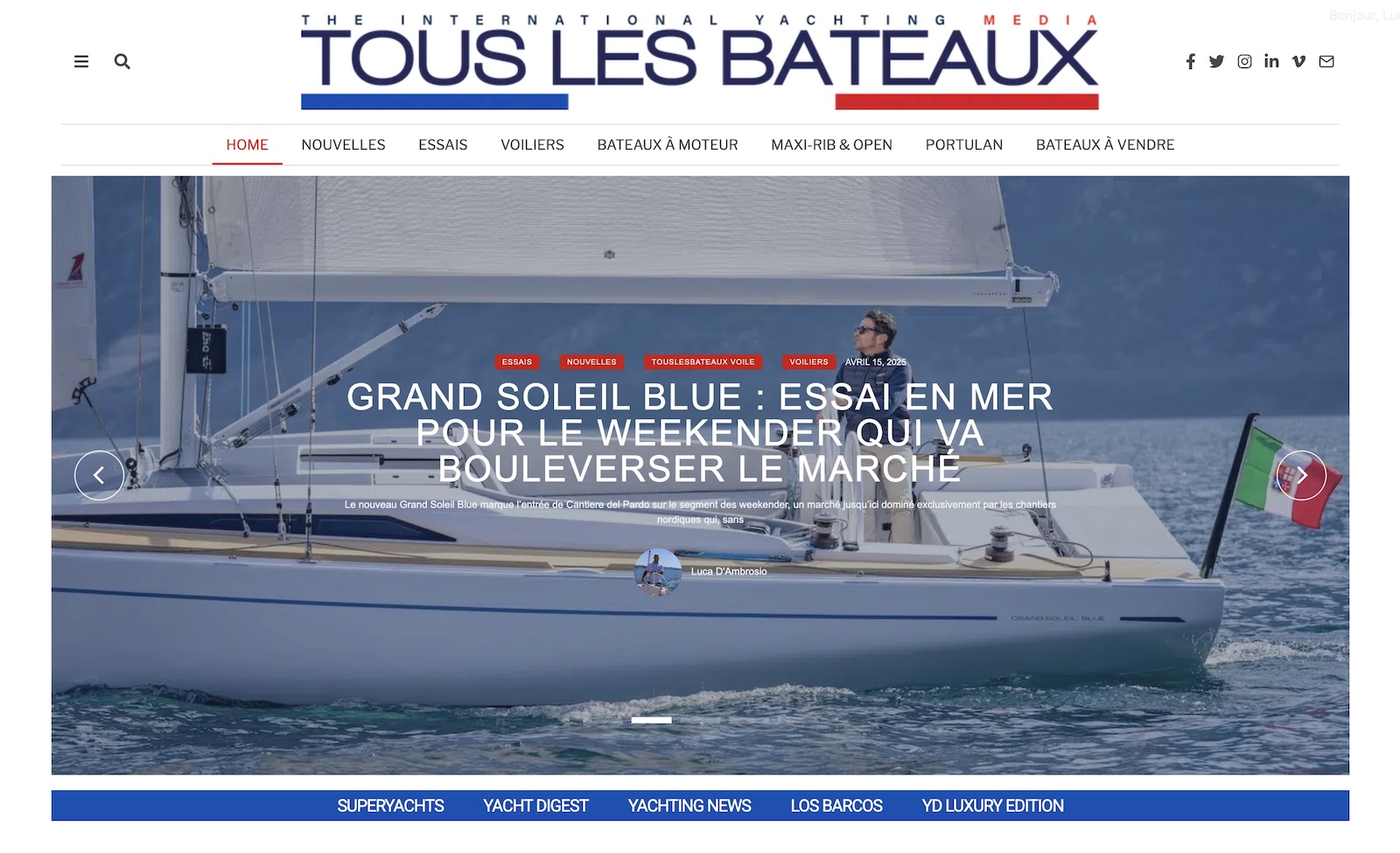
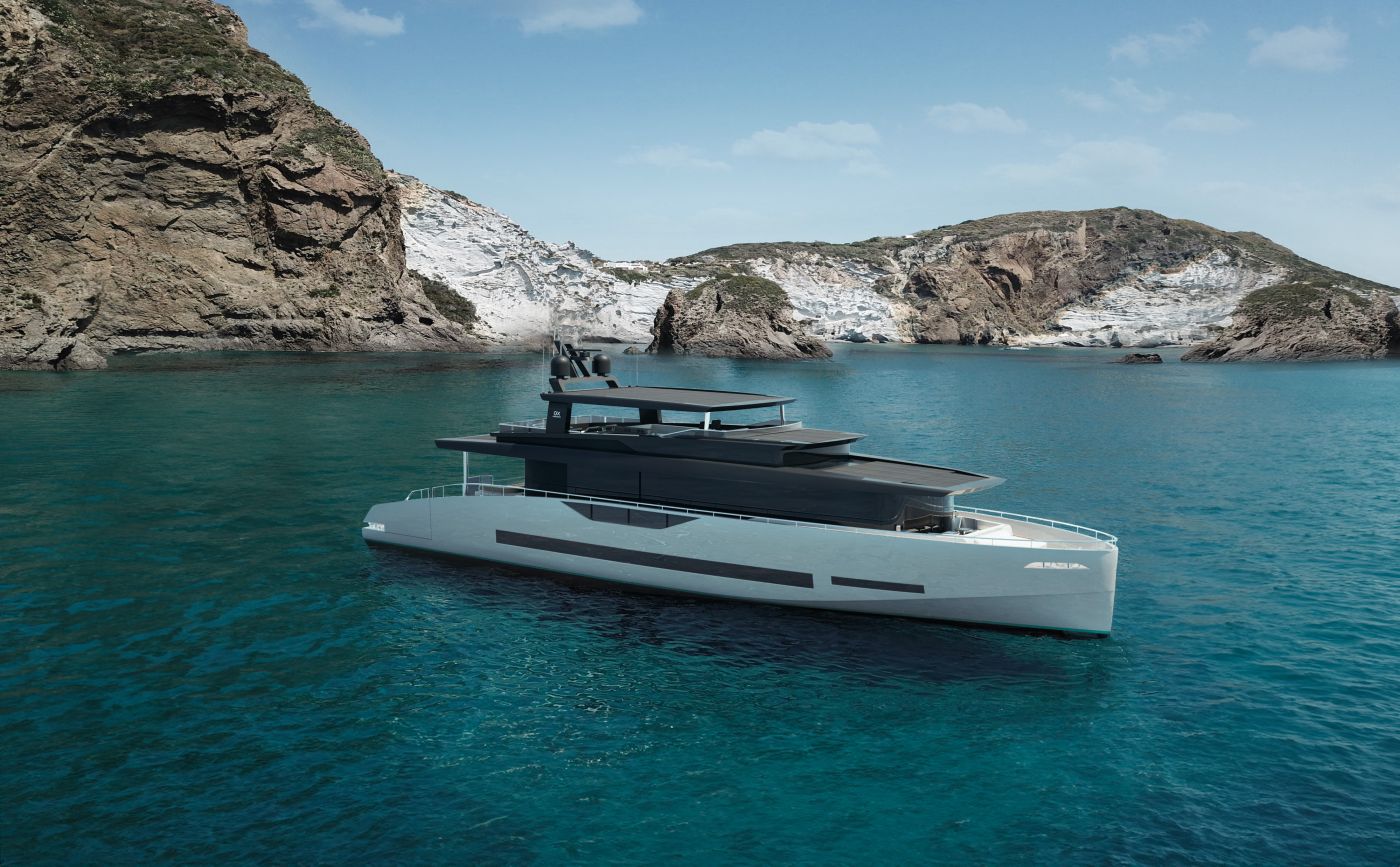
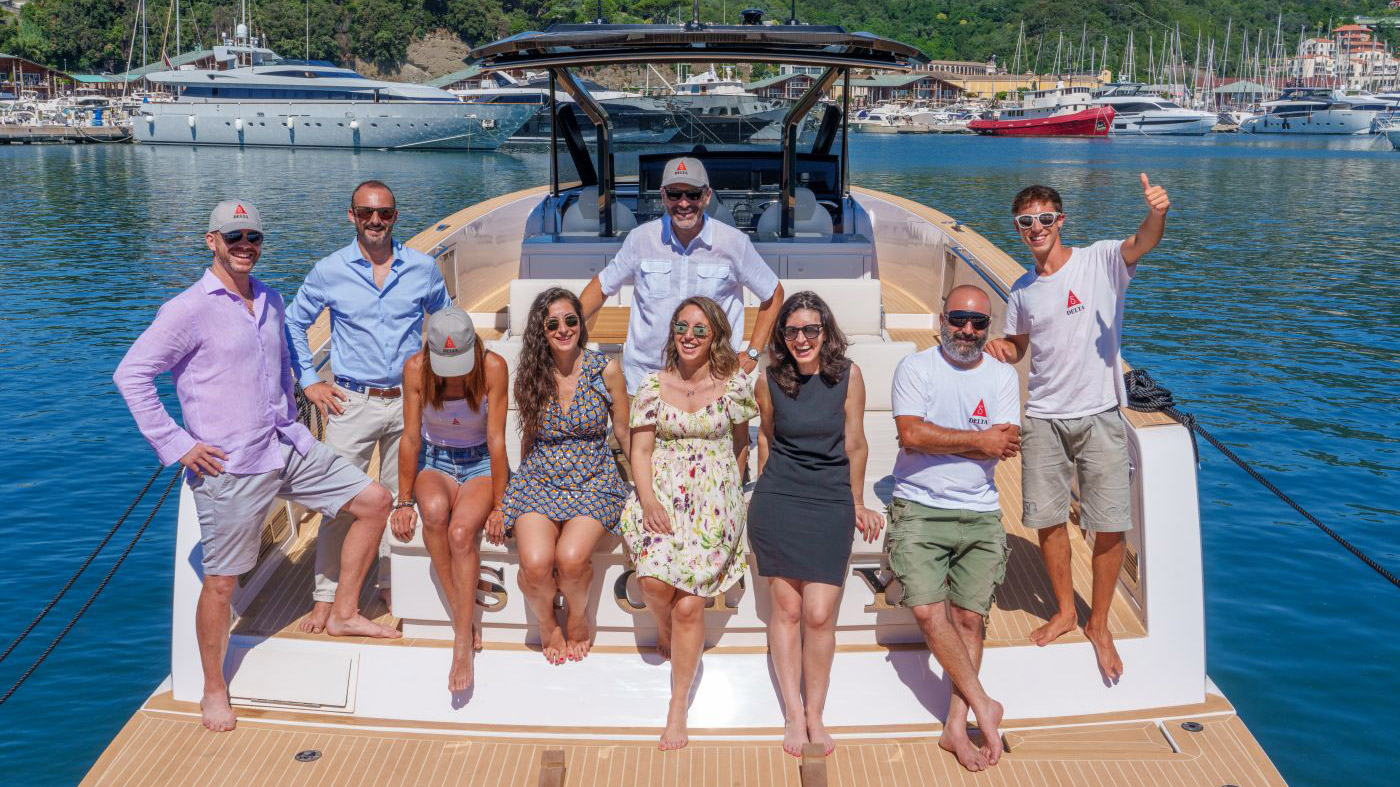
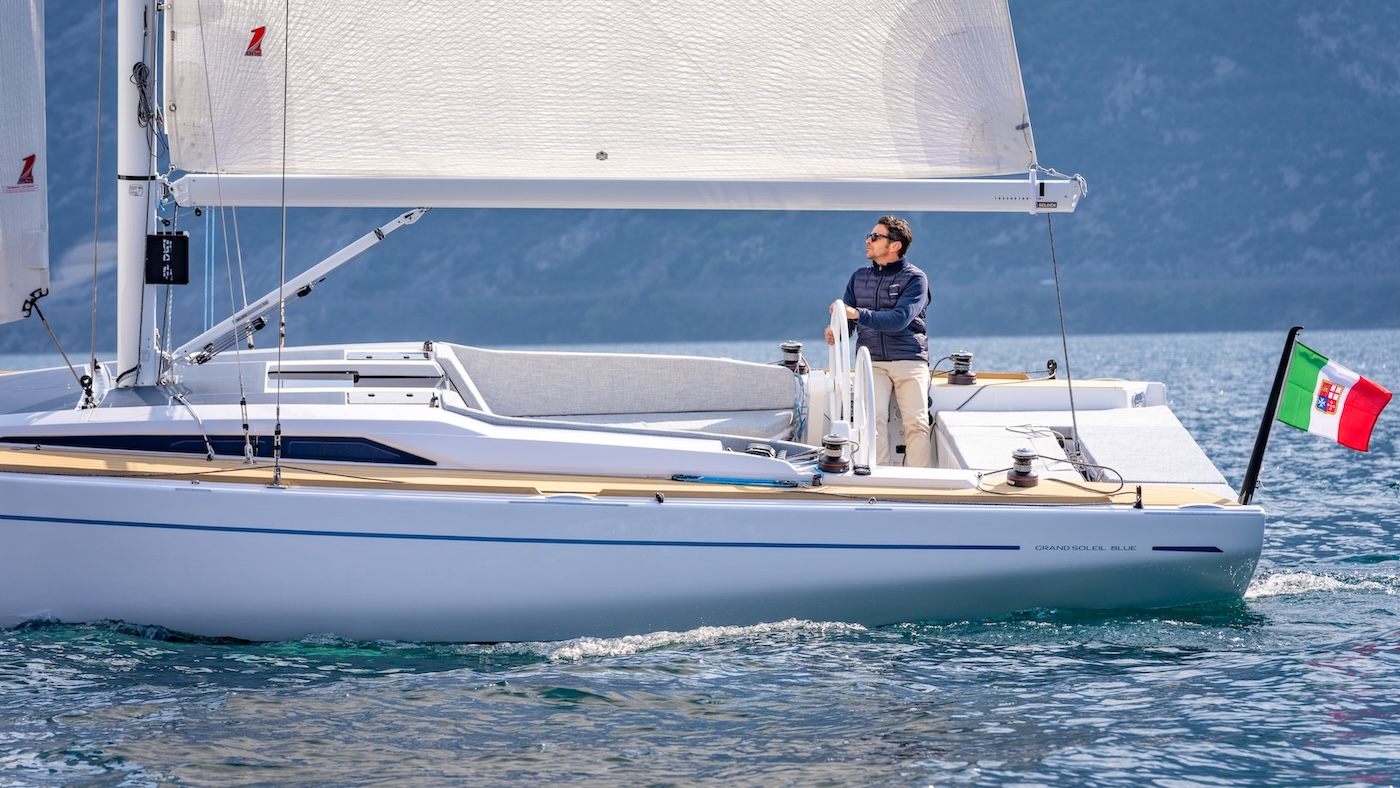

One Response
👍👍👍🥂🥂🥂